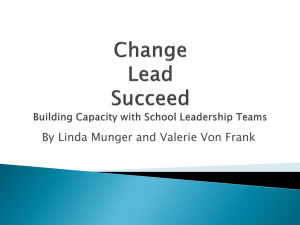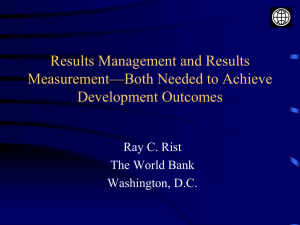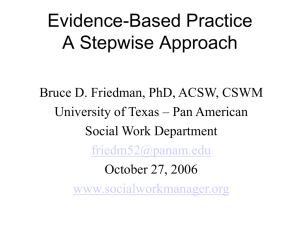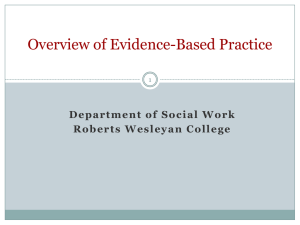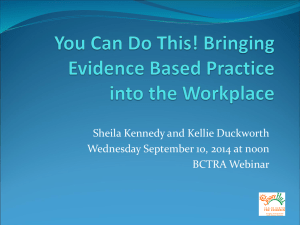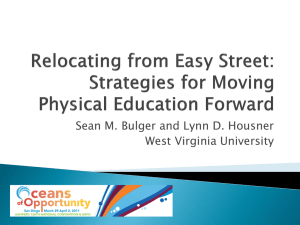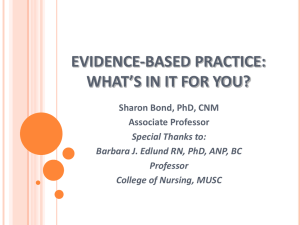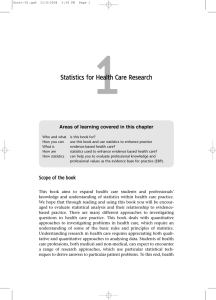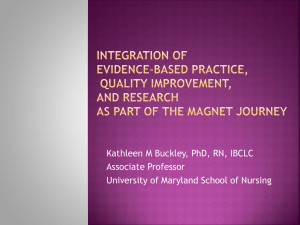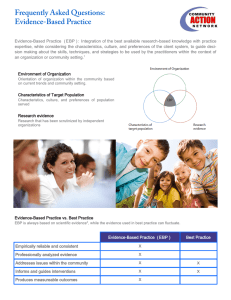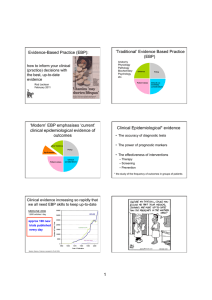Presentation
advertisement
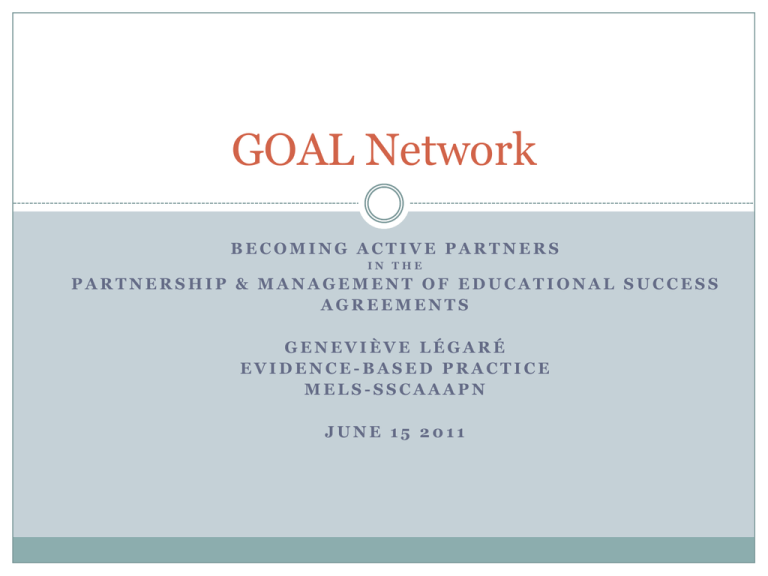
GOAL Network BECOMING ACTIVE PARTNERS IN THE PARTNERSHIP & MANAGEMENT OF EDUCATIONAL SUCCESS AGREEMENTS GENEVIÈVE LÉGARÉ EVIDENCE-BASED PRACTICE MELS-SSCAAAPN JUNE 15 2011 Today’s goal Explore the contribution of GOAL network members in the PA and MESA. Survey Two big questions How does GOAL connect to the 5 ministerial goals? What does GOAL look like in practice? Today’s content Basic concepts Results-based management Evidence-based practice Connect to GOAL Hands-on exercise Two big questions Discussion of GOAL contribution Role of consultants KEY idea Student success Basic Concepts Results-Based Management “Results-based management is a management approach based on measurable results corresponding to pre-established objectives and targets defined in terms of services to be provided. It takes place in a context of transparency, responsibility and flexibility with regard to the means used to attain the targeted goals.” [Translation] Source: Modernisation de la gestion axée sur les résultats, Secrétariat du Conseil du Trésor, June 2002, p.9. Partnership Agreements PA and MESA PA: Partnership Agreements (What it looks like) MESA: Management of Educational Success Agreement 5 Ministerial goals 1. 2. 3. 4. 5. Higher graduation rates of students under the age of 20 Improvement in the mastery of French (and English) Greater success for students with handicaps, social maladjustments or learning difficulties Growth of a healthy and safe environment in schools/centres Increased numbers of people under the age of 20 in vocational training paths Big question #1 HOW DOES GOAL CONNECT TO THE 5 MINISTERIAL GOALS? HANDS-ON ACTIVITY IN 2 STEPS Connection 5 goals -- GOAL Step 1 Step 2 Identify the goals Identify how GOAL can where GOAL could contribute Discuss in small groups contribute to the realization… Brainstorm on GOAL key strategies or activities (Use post-its) Big question #2 WHAT DOES GOAL LOOK LIKE IN PRACTICE? Finding GOAL Evidence Step 1 Brainstorm indicators Use key GOAL strategies identified previously and list key indicators for each Step 2 Assess feasibility Critical thinking posture: Select one strategy and discuss how you will gather the information Synthesis Establishing connections between Big Question #1: Connect GOAL with MELS goals Big Question #2: GOAL evidence What is measureable? How can you contribute? Evidence-Based Practice ANGLOPHONE COMMUNITY EBP: Several terms Using data in practice Data-driven decision making School improvement/School efficiency Research-based decision making Collaborative inquiry Results-based management Utilisation de la connaissance EVIDENCE-BASED PRACTICE SPECTRUM Data Driven Decision Making (DDDM) Using data to guide decisions in order to improve student success Research-Based Practices (RBP) Using proven teaching practices to improve student success DDDM RBP EBP as Data-Driven Decision Making Definitions Monitoring : Accountability: Use of data to track or to monitor the development of a project, the progress of a student or a given situation Use of data to take a picture in time and report on results and/or actions Connects to Results-Based Management EBP as Research Based Practice Definition Proven practices as evaluated by research Approaches or strategies supported by research Groups specialized in carrying out meta analyses— reading strategy, classroom management etc. • Cochrane collaboration, Campbell, Canadian Center for Learning, CTREQ, CLIPP Diffusion of information to practionners What works in education EBP: Three strands +1 Data Workshops Community of practice (EBP Lead Data team) Data teams in schools and school boards Partnership Support Group +1: Access to data GOAL contribution HOW CAN GOAL MEMBERS BECOME ACTIVE PARTNERS IN THE PA/MESA PROCESS? Data Wise Process Data Wise: A Step-by-Step Guide to Using Assessment Results to Improve Teachning and Learning. Boudett, K.P., City, E.A., and Murname, R.J., Eds. Cambridge: Harvard Education Press. Data Teams process 1. 2. 3. 4. 5. 6. Collect and chart data Analyze to prioritize Set SMART goals Select instructional strategies Determine results indicators Monitor meetings and subsequent actions Contribution of Consultants Domain knowledge Expertise on analysis of results Expertise on tools to collect information Expertise on selection and implementation of strategies Monitoring of implementation of strategies and assist in decision-making Role of professionals Support school principals in the selection of proven strategies Support teaching practices and track results Classroom teachers—greatest impact on students Work in collaboration with Evaluation and subject consultants Guidance counselors NANS and CLCs representatives Transfer One key idea to share with your colleagues of your board? Conclusion THANK YOU! GENEVIÈVE LÉGARÉ 450-621-5600, X1339 GLEGARE@SWLAURIERSB.QC.CA
